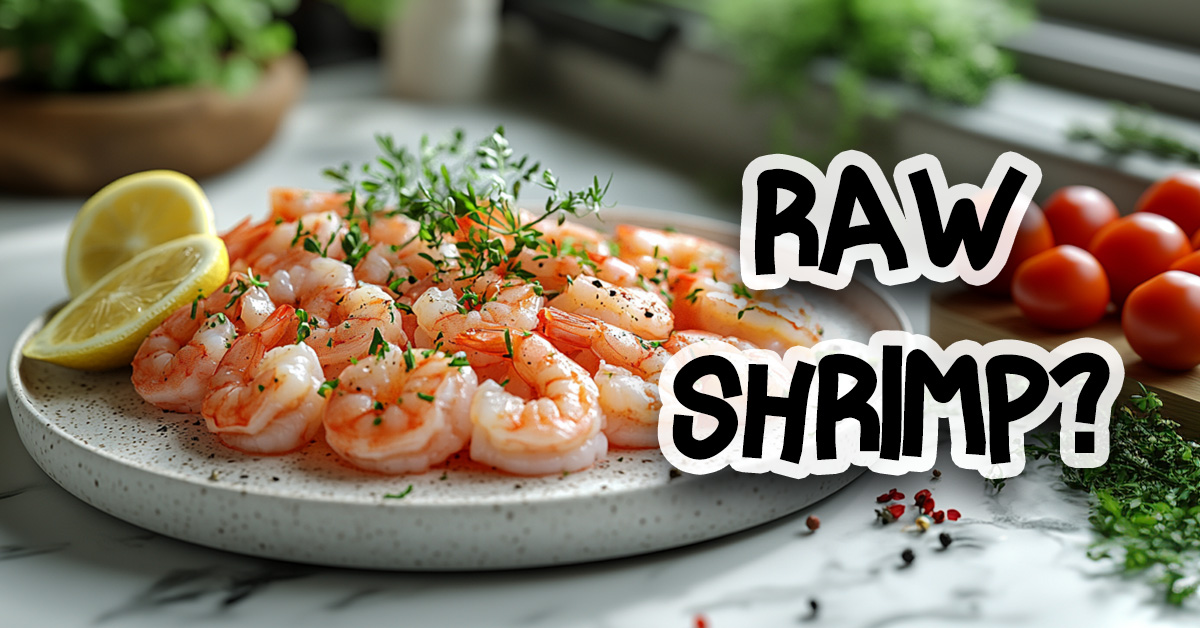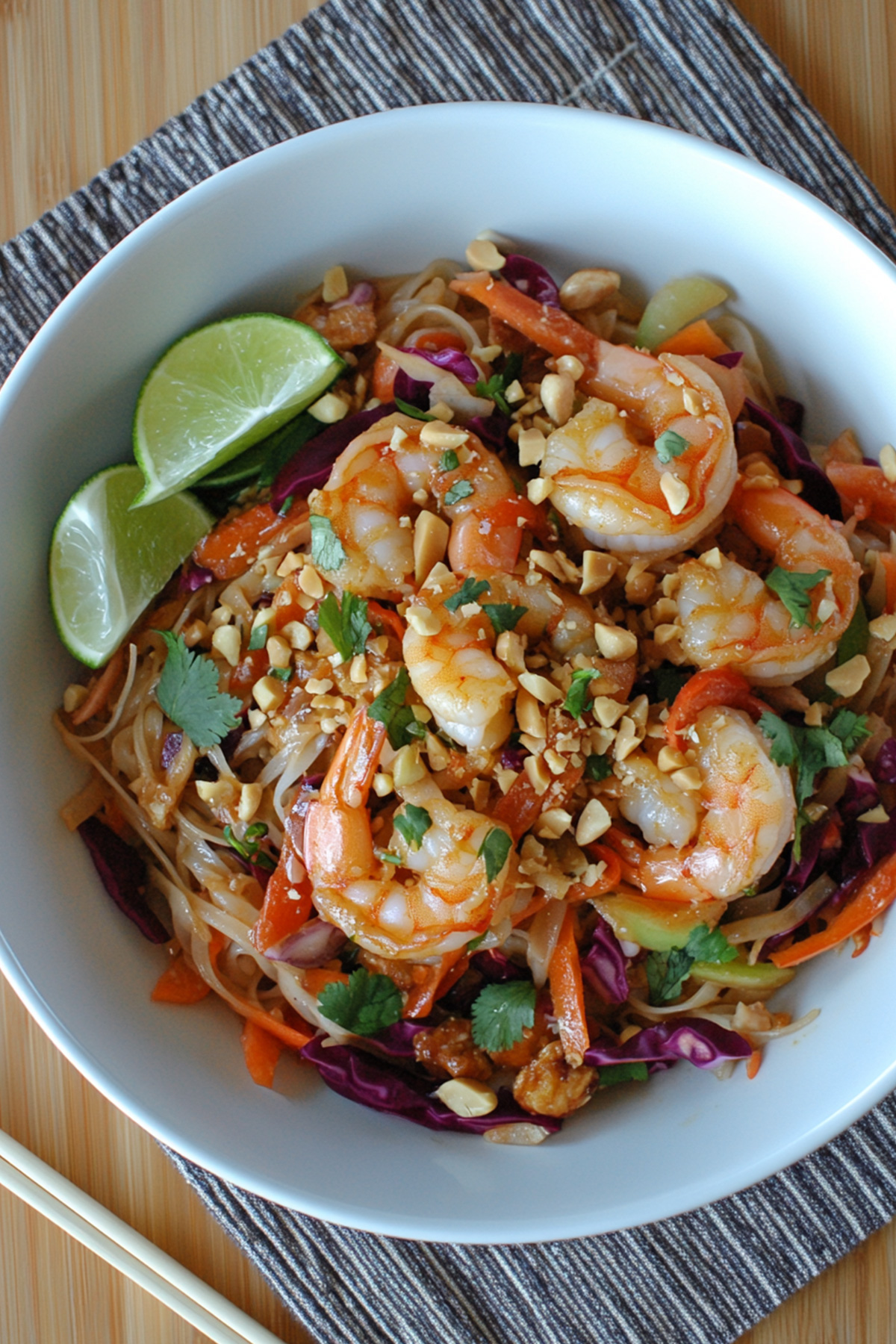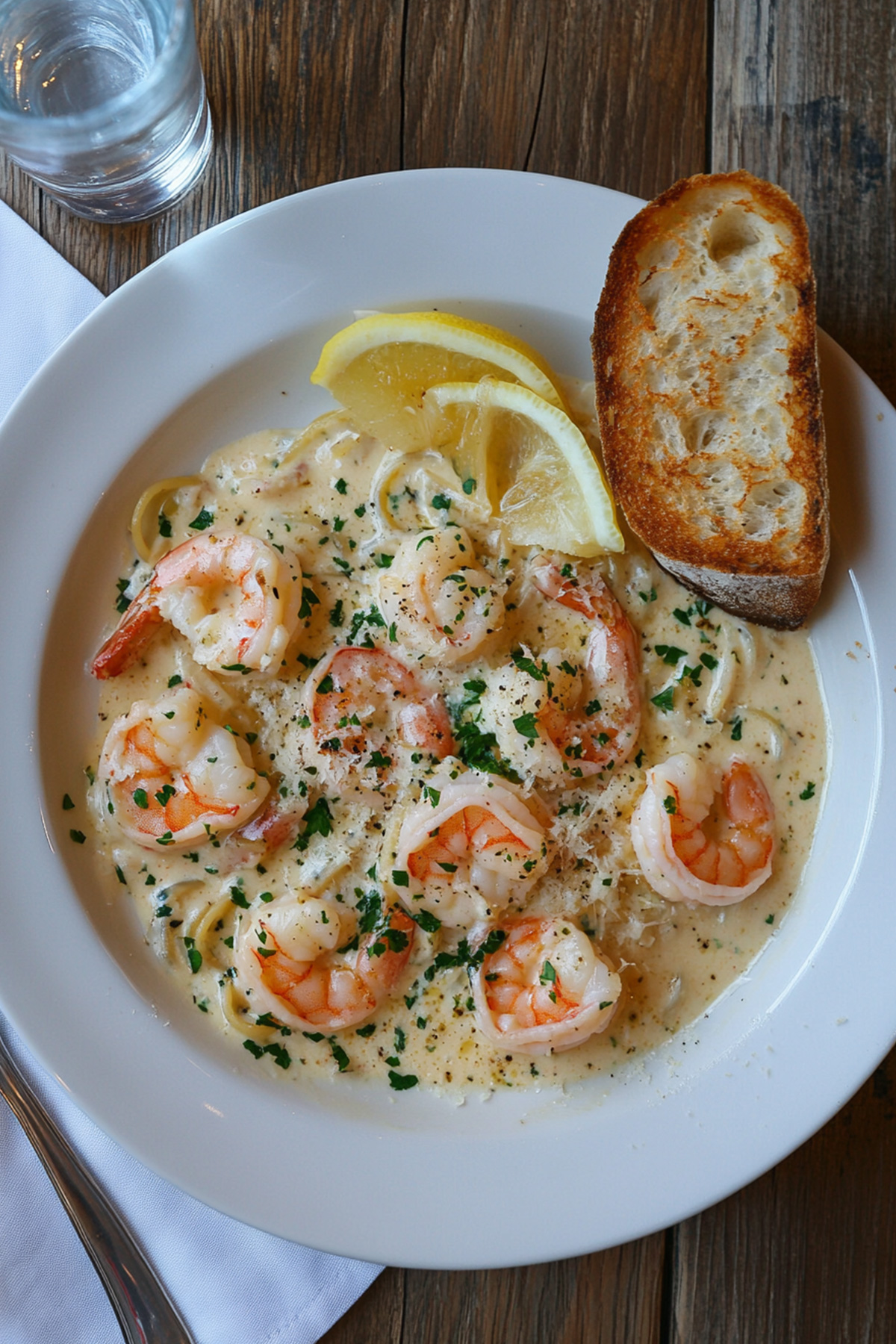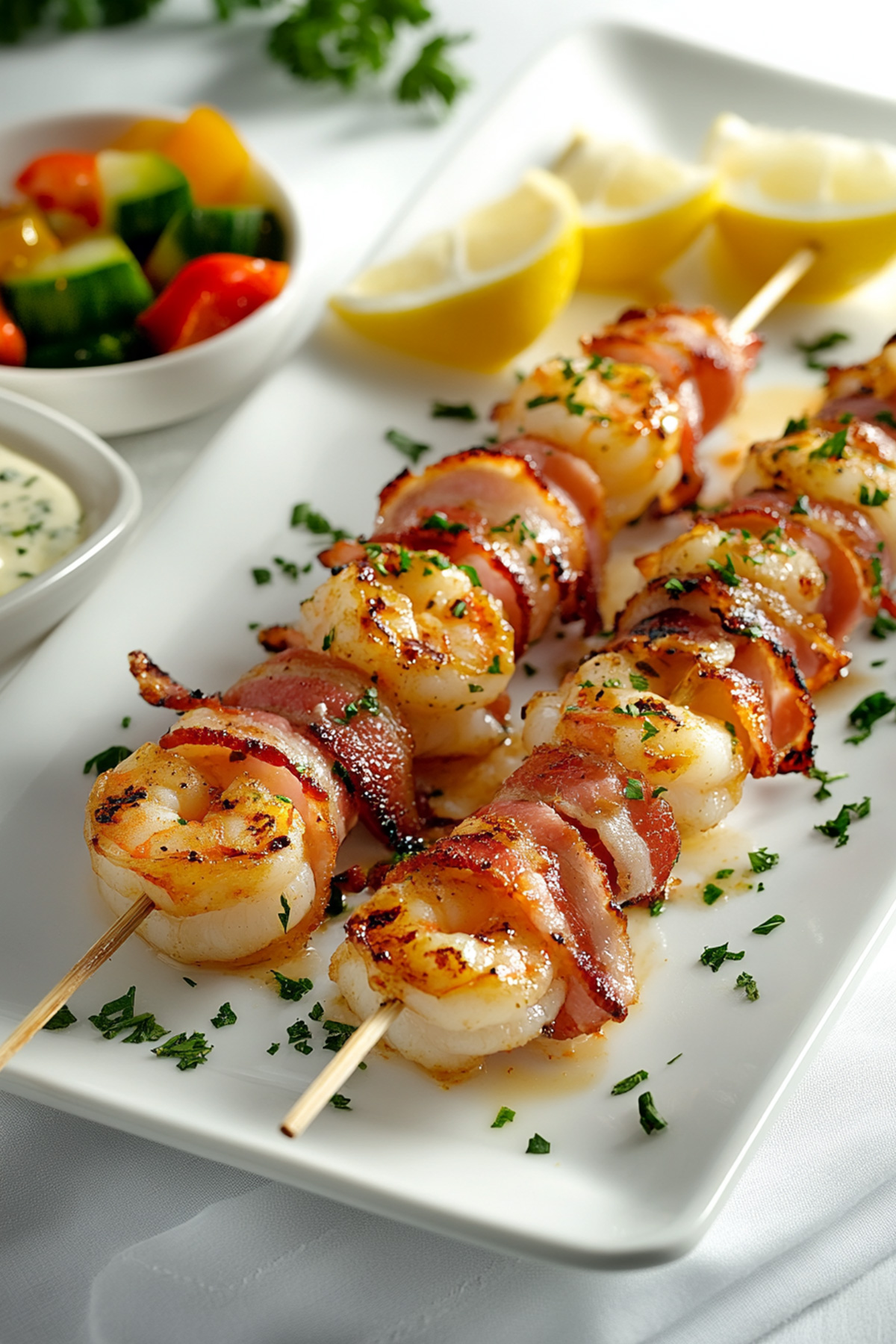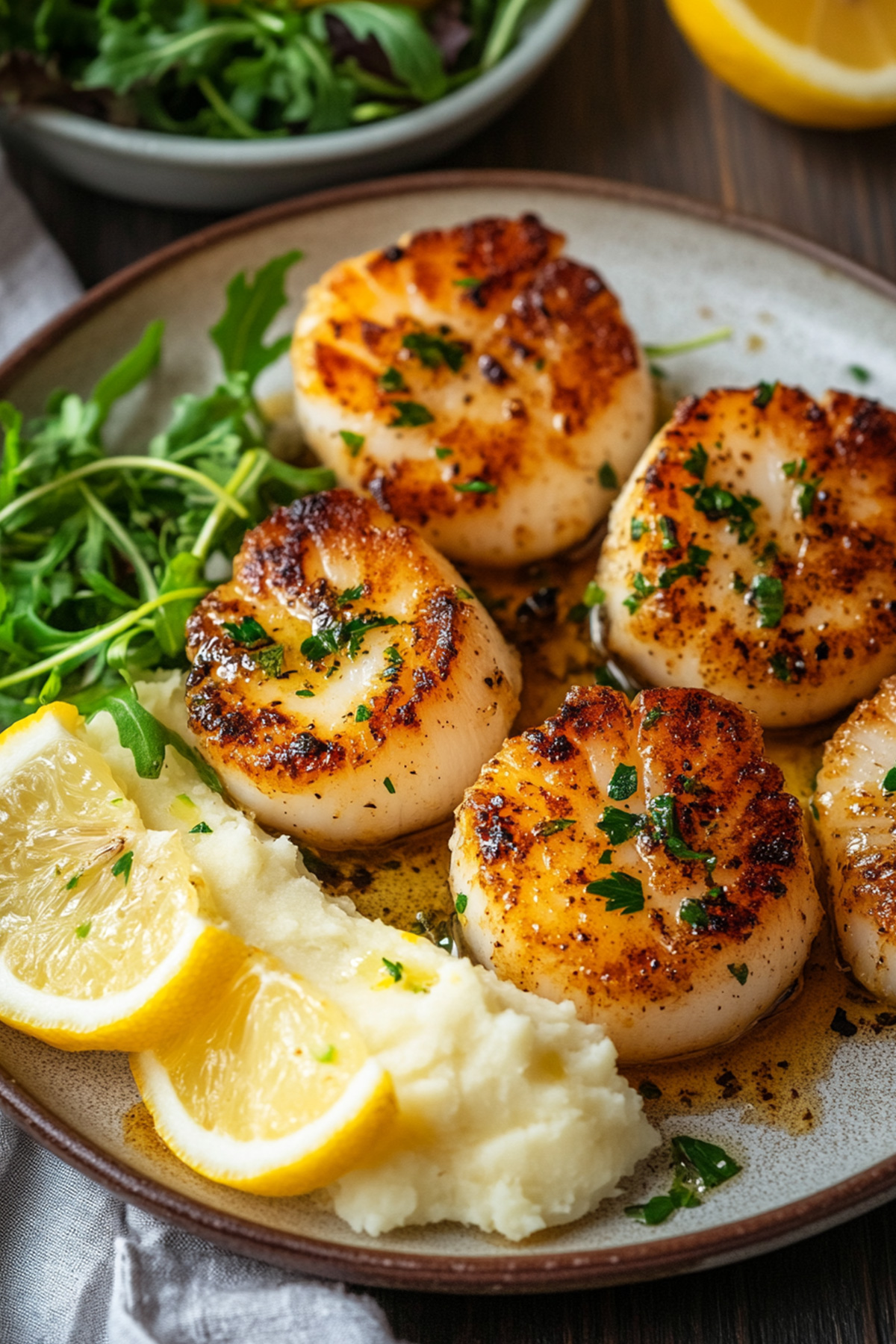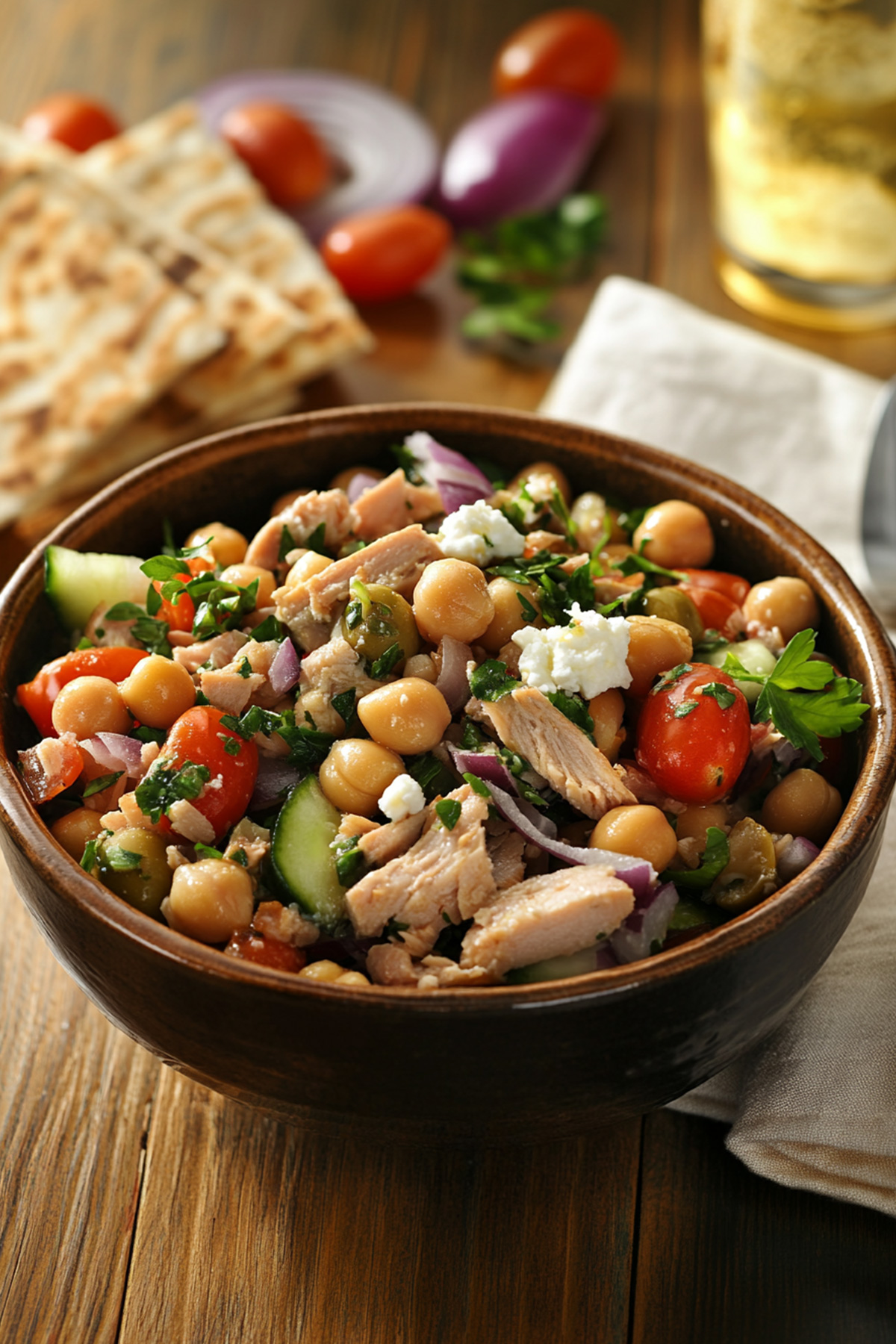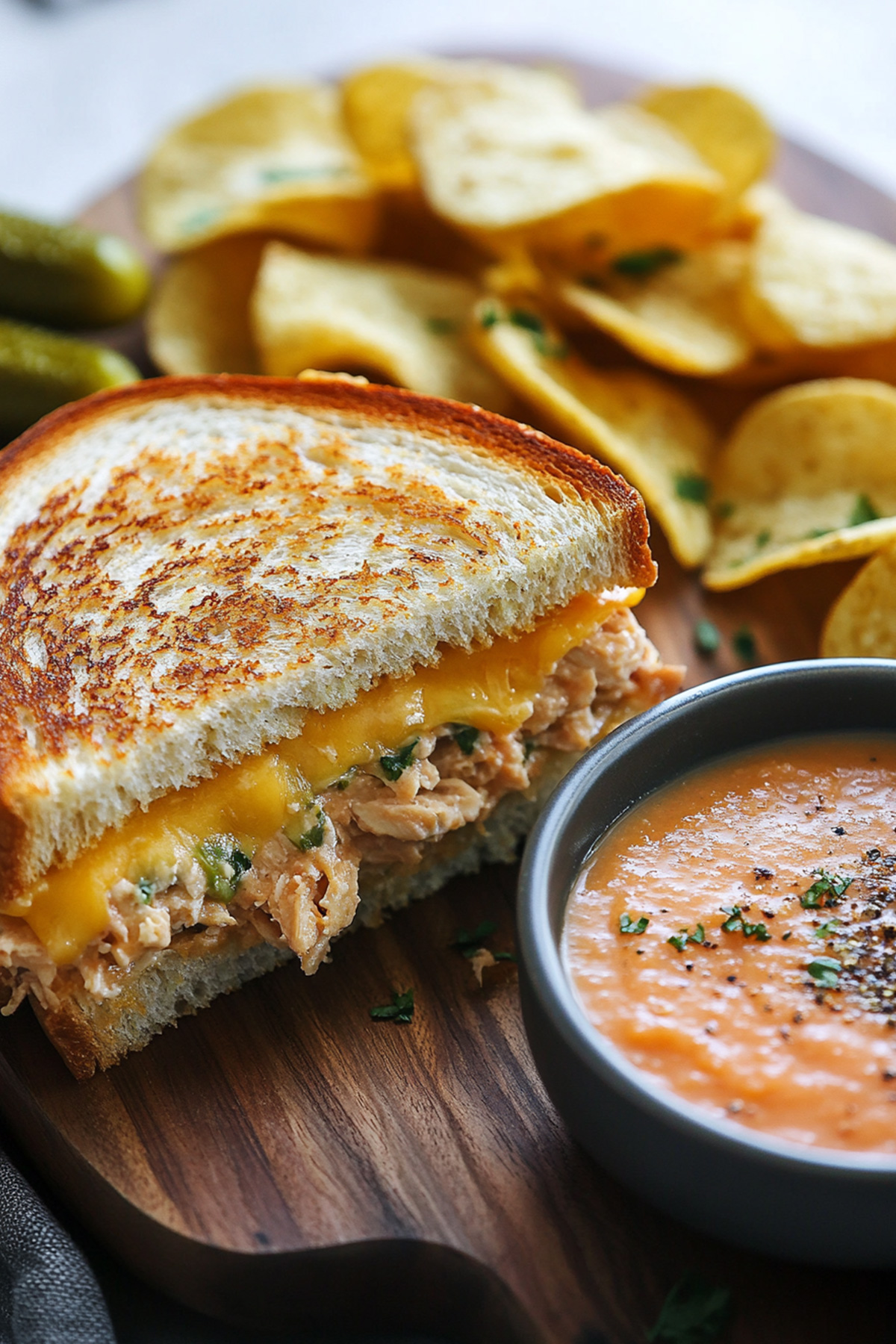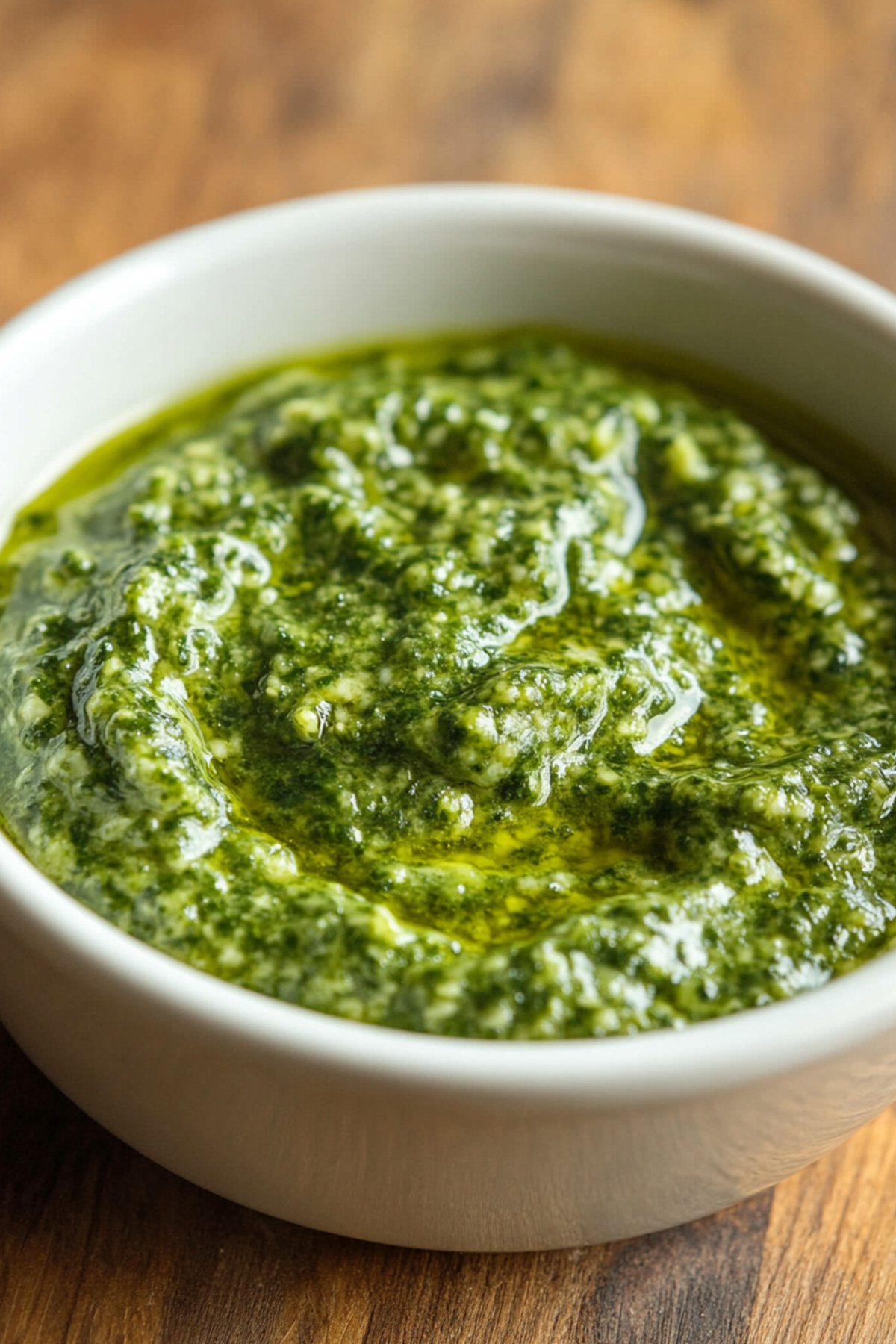So, Can You Eat Raw Shrimp? Raw seafood’s popularity has exploded in restaurants worldwide. You might wonder if shrimp can be eaten raw, just like salmon or tuna. Several cultures have enjoyed raw shrimp for centuries, but experts still debate its safety.
Eating raw shrimp brings both risks and benefits to the table. Your decision to try raw shrimp should depend on understanding what it means for your health.
Bacterial contamination poses risks, while unique nutritional benefits exist. This piece walks you through everything about eating raw shrimp safely. You’ll learn about preparation methods, health factors, and different cooking options.
What you’ll discover:
- Health risks and safety concerns of raw shrimp
- Best ways to prepare raw shrimp
- Famous dishes that use raw shrimp
- Safe cooking alternatives
- What to do if you eat raw shrimp by accident
Table of Contents
Is It Safe to Eat Raw Shrimp?
Raw shrimp dishes appear on some upscale restaurant menus, but food safety experts strongly warn against eating raw shrimp at home. A detailed study of raw shrimp samples showed that 55% contained harmful Vibrio bacteria, which points to substantial risks. [Reference]
Risks of Eating Raw Shrimp
Raw shrimp poses serious safety risks backed by scientific evidence. Scientists tested shrimp at seafood processing facilities and found that all but one of these samples had Bacillus bacteria. This bacteria can lead to severe stomach problems. The situation looks worse for farmed shrimp where researchers found 100 different strains of Vibrio that resist antibiotics.
Raw shrimp often contains these contaminants:
- Bacteria (Vibrio, Salmonella, E. coli)
- Viruses (including norovirus and hepatitis A)
- Parasites
- Chemical contaminants from farming practices
What Happens If You Eat Undercooked Shrimp?
Symptoms show up within 24 hours after eating raw or undercooked shrimp. These symptoms can vary substantially in severity and duration. Vibrio infections lead to about 500 hospitalizations and 100 deaths each year in the United States alone. [Reference]
Common symptoms include:
- Stomach cramps and watery diarrhea
- Nausea and vomiting
- Fever and chills
- Symptoms lasting 3-7 days
High-Risk Groups Some people need extra caution with raw shrimp. Older adults, pregnant women, young children, and people with weak immune systems face higher risks of serious complications. A mild infection can put these individuals in the hospital.
Freezing shrimp at -4°F or below for seven days kills some parasites. Keep in mind that freezing doesn’t kill all harmful bacteria. The only safe approach is to cook shrimp until it reaches an internal temperature of 145°F (63°C).
Benefits of Eating Raw Shrimp
Raw shrimp can be risky to eat, but proper preparation makes it a valuable addition to your diet thanks to its impressive nutritional content. A standard 3-ounce serving of shrimp delivers 20 grams of protein and meets 40% of your daily protein needs.
Your body gets these rich nutrients from shrimp:
- Selenium and iodine for thyroid health
- Zinc and magnesium for immune function
- Phosphorus for mineral balance
- B vitamins (B6, B12, and niacin)
- Omega-3 fatty acids for heart health
Astaxanthin stands out as one of shrimp’s most remarkable compounds. This powerful antioxidant makes it different from other seafood.
Studies reveal that astaxanthin shows 100-500 times more antioxidant activity than other carotenoids, including beta-carotene. This unique compound protects your cells from damage and might lower your risk of several chronic conditions.
Heart Health Benefits Shrimp consumption benefits your cardiovascular system especially. Research shows that eating shrimp regularly links to better heart health outcomes, despite its cholesterol content. Shrimp’s omega-3 fatty acids help raise your HDL (good cholesterol) while lowering LDL (bad cholesterol) levels.
Inflammation and Brain Protection Shrimp’s astaxanthin reduces your body’s inflammation by neutralizing harmful free radicals. This anti-inflammatory action might protect your brain cells from damage that often guides to memory loss and neurodegenerative conditions.
Thyroid Support Shrimp provides two vital minerals for thyroid health: iodine and selenium. These nutrients are significant for proper thyroid function, and selenium works to protect your thyroid glands.
Weight Management Support Shrimp is a great protein source that’s low in calories and carbohydrates – perfect for weight watchers. High protein content helps you stay full longer and maintains muscle during weight loss.
Eye Health Protection Shrimp’s antioxidants, particularly astaxanthin, shield your eyes from oxidative damage and might reduce age-related macular degeneration risk. This protection becomes more important as you age.
Reference:
– Verywellhealth
How to Safely Eat Raw Shrimp
Raw shrimp comes with risks, so you need to follow strict safety protocols if you want to try it. The FDA has specific guidelines that help minimize health risks when preparing raw shrimp.
You should get your shrimp from government-regulated businesses that freeze their products properly. The freezing process needs specific temperatures: either -4°F or below for seven days or -31°F or below for at least 15 hours. These temperatures will kill parasites but won’t eliminate all harmful bacteria. [Reference]
Here’s what to look for when buying raw shrimp:
- Fresh, clean smell (like seawater)
- Firm texture without sliminess
- Clear, prominent eyes
- No yellowing near the tail
- No ammonia-like odors
Safe storage plays a big role. Keep raw shrimp in the fridge at or below 40°F and use them within two days. Wrap them tightly in moisture-proof packaging if you plan to freeze them.
Here’s how to prepare raw shrimp safely:
- Wash your hands really well with soap and warm water for at least 20 seconds
- Clean all cutting boards and utensils with hot, soapy water
- Remove the shell and head if present
- Devein the shrimp carefully
- Rinse with cold water to remove any remaining debris
You need to prevent cross-contamination during preparation. Use different cutting boards and utensils for raw shrimp and other foods. Keep your work area clean and make sure all preparation tools are really clean before and after use.
If you’re planning to serve raw shrimp in dishes like sashimi or ceviche, temperature control is vital. Keep the shrimp cold throughout preparation and service, ideally on ice or in a refrigerated display unit.
Note that pregnant women, elderly individuals, young children, and people with compromised immune systems should avoid raw shrimp completely.
Look for products with the “Best Aquaculture Practices Label” from the Aquaculture Certification Council when buying shrimp for raw consumption.
This certification ensures the shrimp meets strict safety and quality standards. On top of that, it helps to check if your supplier keeps proper temperature logs and follows FDA food safety guidelines.
Dishes Featuring Raw Shrimp
Raw shrimp’s delicate flavors shine in several classic dishes. Each preparation method tells its own cultural story. These three popular dishes have earned their spots on fine dining menus around the world.
Shrimp Sashimi Japanese cuisine celebrates raw shrimp through thinly sliced sashimi that comes with soy sauce and wasabi. Ama ebi (sweet shrimp) and Botan ebi are the preferred choices for sashimi because of their natural sweetness and tender texture. The simple preparation lets the shrimp’s pure, clean taste stand out, and the flesh offers a subtle sweetness with sea-fresh flavors.
Shrimp Ceviche Coastal Latin America’s vibrant ceviche lets citrus juices work their magic on raw shrimp. Lime and lemon juice’s acid changes the shrimp’s texture and appearance until it becomes firm and pink. The classic shrimp ceviche brings together:
- Fresh lime and lemon juice
- Red onion and cucumber
- Cilantro and chile peppers
- Optional additions like avocado or mango
The citrus marinade needs about 30 minutes to “cook” the shrimp, though larger pieces might take up to 2 hours. The dish tastes best when served within an hour or two after preparation.
Shrimp Tartare This refined appetizer lets raw shrimp’s natural flavors take center stage. Finely chopped shrimp meets carefully selected ingredients that bring out its natural sweetness. A classic shrimp tartare combines:
- Coarsely chopped fresh shrimp
- High-quality olive oil
- Citrus zest
- Fresh herbs like thyme
- Light seasoning
The dish works beautifully with different sides, from crostini to cucumber cups. The shrimp’s sweetness balances perfectly with citrus notes, creating a sophisticated starter that comes together easily with quality ingredients.
These dishes need exceptionally fresh shrimp and proper handling techniques for safety and flavor. Restaurants commonly serve these preparations, but home cooking requires careful ingredient sourcing and proper food safety measures covered in earlier sections.
Alternatives to Eating Raw Shrimp
Want to enjoy delicious shrimp without the risks of eating it raw? You’ll love these mouthwatering alternatives that taste amazing and keep you safe. Let me show you how to cook shrimp perfectly every time.
The best ways to cook shrimp for people who don’t want it raw.
Great-tasting cooked shrimp starts with the right prep. Your shrimp should thaw completely in the refrigerator overnight to get the best texture. Here are the cooking methods that work best:
Pan Searing: A hot pan with olive oil or butter will cook your seasoned shrimp in 2-3 minutes per side. You can add minced garlic to create a classic scampi-style dish that tastes incredible.
Grilling: The smoky flavors come alive when you skewer shrimp with lemon slices and grill them for 2-3 minutes on each side. Larger shrimp work best on the grill, giving you that perfect charred exterior while staying juicy inside.
Steaming: This gentle method brings out shrimp’s natural sweetness and keeps them tender. You’ll know they’re done when they curl into a “C” shape and turn pink and opaque.
These tips will help you nail it every time:
- Temperature Control
- Keep shrimp cold until you’re ready to cook
- Look for that opaque color
- The C-shape shows they’re done perfectly
Flavor Enhancement Ideas:
- A fresh chimichurri sauce works magic with grilled shrimp
- Coconut coating gives you a crispy, tropical bite
- Fresh citrus juice brightens up the flavor
The core team of shellfish alternatives works great if you have allergies or different food priorities:
- King oyster mushrooms give you that similar texture
- Firm white fish like cod or halibut does the trick
- Scallops make a great seafood swap
Your shrimp turns rubbery if it’s overcooked, so timing matters. Heat leftover shrimp gently with a splash of water to keep them moist. Cooked shrimp stays fresh in your fridge for 3-4 days.
A quick weeknight dinner idea: Heat butter and olive oil in a pan, cook minced garlic and onions until clear, then toss in your shrimp with some white wine. This simple combo creates restaurant-quality results fast.
What to Do If You Eat Raw or Undercooked Shrimp by Mistake?
Did you accidentally eat raw or undercooked shrimp? Don’t panic – here’s what you need to do next. Your stomach acid helps curb some harmful organisms, but you’ll need to watch your health carefully in the coming days.
Take these steps right away:
- Watch yourself for the first 12 hours to spot any symptoms
- Drink plenty of fluids
- Write down when you ate the shrimp
- Track any new symptoms
- Keep emergency numbers handy
These symptoms usually show up within specific timeframes:
- 6 hours to 6 days for Salmonella infection
- 24 hours for Vibrio infection
- 40-48 hours for bacterial infections
What to Monitor Raw shrimp can affect your body in different ways. You might experience stomach cramps, nausea, vomiting, and diarrhea. The sickness typically lasts 4 to 7 days. Some people recover with mild discomfort while others need hospital care.
When to Seek Medical Help Most cases clear up naturally, but you’ll need immediate medical care if you notice:
- Severe dehydration from frequent vomiting or diarrhea
- High fever
- Bloody stools
- Symptoms that last more than a week
- Extreme stomach pain
Special Considerations Some people need to be extra careful. Older adults, pregnant women, young children, and people with weak immune systems face higher risks of serious complications. These groups should call their doctor right after eating raw shrimp, even before any symptoms appear.
Hydration is Key Staying hydrated is vital. Frequent vomiting and diarrhea can lead to dehydration, which hits children and older adults particularly hard. Here’s how to stay hydrated:
- Drink clear fluids often
- Try oral rehydration solutions
- Skip caffeine and alcohol
- Take small sips instead of big gulps
It’s worth mentioning that symptoms don’t always show up right away. Some people feel sick within hours, while others might not notice anything for several days.
Keep monitoring your health for a week after eating the shrimp, even if you feel fine at first.
Recovery times vary by a lot depending on the specific bacteria or virus.
Mild cases might clear up in a few days, while others could take a week or longer. Focus on rest, hydration, and eating gentle foods that won’t upset your stomach during this time.
Frequently Asked Questions About Eating Raw Shrimp
Let’s tackle the most common questions about eating raw shrimp. This will help you make better choices about your seafood.
Can You Eat Frozen Raw Shrimp?
You can eat frozen raw shrimp, but you need to meet specific temperature requirements to stay safe. Studies show that shrimp needs to be frozen at -4°F or below for at least seven days, or at -31°F or below for at least 15 hours to kill parasites. But freezing won’t kill all harmful bacteria. [Reference]
Here’s what you need to do with frozen raw shrimp:
- Thaw in refrigerator overnight (never at room temperature)
- Keep temperature between 0°C and 4°C during thawing
- Use within 24 hours of thawing
- Keep proper storage records
- Look for quality signs before eating
Can You Eat Raw Shrimp While Pregnant?
The answer is a firm no. Medical experts strongly advise against eating raw shrimp during pregnancy. Your immune system changes during pregnancy and makes you more vulnerable to foodborne illnesses that could harm you and your baby. [Reference]
Pregnant women should know:
- Raw seafood brings higher risks during pregnancy
- You should avoid even high-quality raw shrimp
- Cooked shrimp is safe and nutritious during pregnancy
- Cook shrimp until it reaches 145°F (63°C) inside
How Can You Tell If Shrimp Is Safe to Eat Raw?
No visual check can guarantee safety, but you can look for these quality signs:
Physical Appearance:
- Gray or white color with possible translucency
- No black spots on head or body
- No thin film or slime covering
- Firm, not limp texture
Smell and Storage:
- Fresh, clean ocean scent
- No ammonia-like odors
- No strong or unpleasant smell
Stay safe by buying shrimp only from government-regulated businesses that:
- Track temperature records
- Follow proper freezing methods
- Keep clean storage facilities
- Have food safety certifications
Important Safety Considerations: Raw shrimp samples have shown worrying levels of contamination. Research found that 55% of raw shrimp had potentially harmful Vibrio species. A study of farmed shrimp found 100 strains of Vibrio, and many don’t respond well to antibiotics.
Most supermarket shrimp are frozen at sea and delivered frozen to stores. Live shrimp from the ocean or tanks are the only ones you should buy unfrozen.
Raw shrimp brings higher risks for:
- Pregnant women
- Elderly individuals
- Young children
- People with weak immune systems
These groups should stay away from raw or undercooked shrimp because they could get seriously ill.
Keep in mind that storage matters – fresh shrimp stays good in the fridge for four days, while frozen shrimp lasts up to five months. Check your shrimp carefully before eating. Trust your instincts – if the color, smell, or texture seems wrong, don’t take the risk.
Final Thoughts – Should You Eat Raw Shrimp?
Raw shrimp has distinct flavors and nutritional benefits, but safety concerns make it a tricky choice for seafood lovers. You can make better decisions about eating raw shrimp if you understand the risks and know the right steps to take during preparation.
Cooking shrimp properly is the safest way to get its nutritional benefits without health risks. The perfectly grilled jumbo shrimp or a classic shrimp scampi will guarantee both safety and flavor. These cooking methods eliminate harmful bacteria and parasites effectively.
Pregnant women, elderly people, and those with compromised immune systems should stay away from raw shrimp completely. Your health and safety matter most – stick to fully cooked options that still deliver this popular seafood’s sweet, delicate taste if you have any doubts.
Read also:
– Can you eat Raw Clams?
– Can you eat Raw Tuna?
– Can you eat Raw Scallops?

